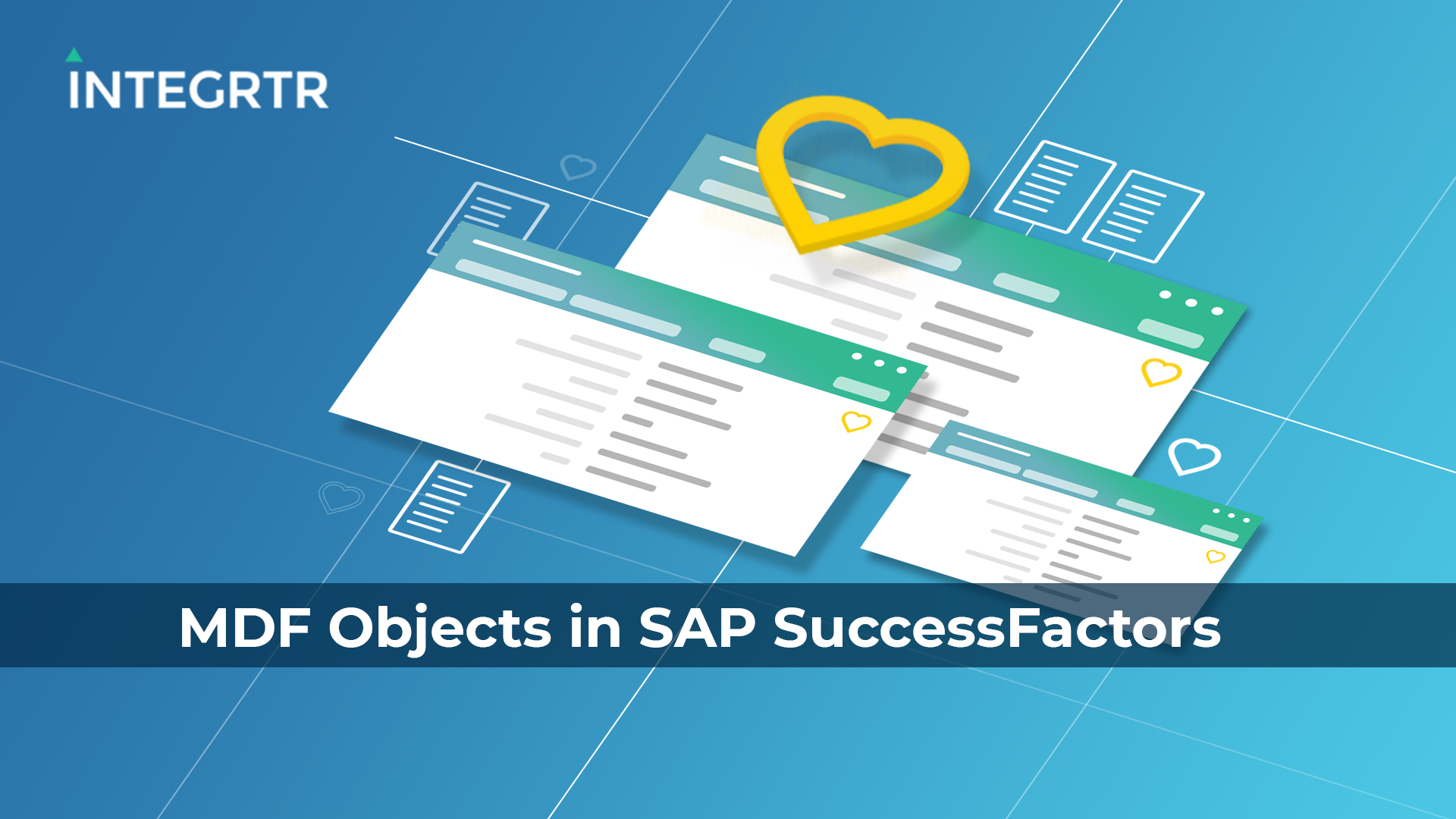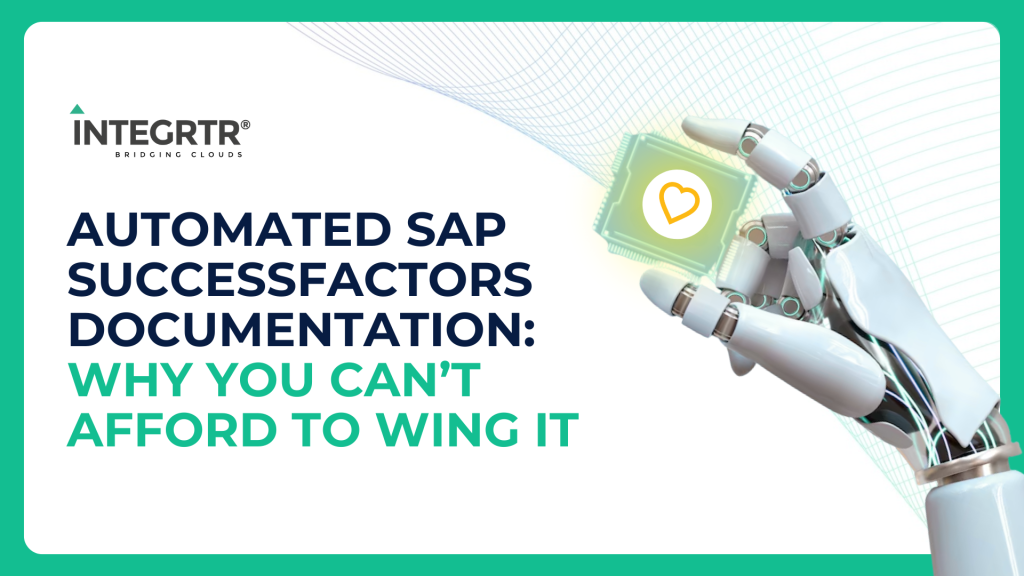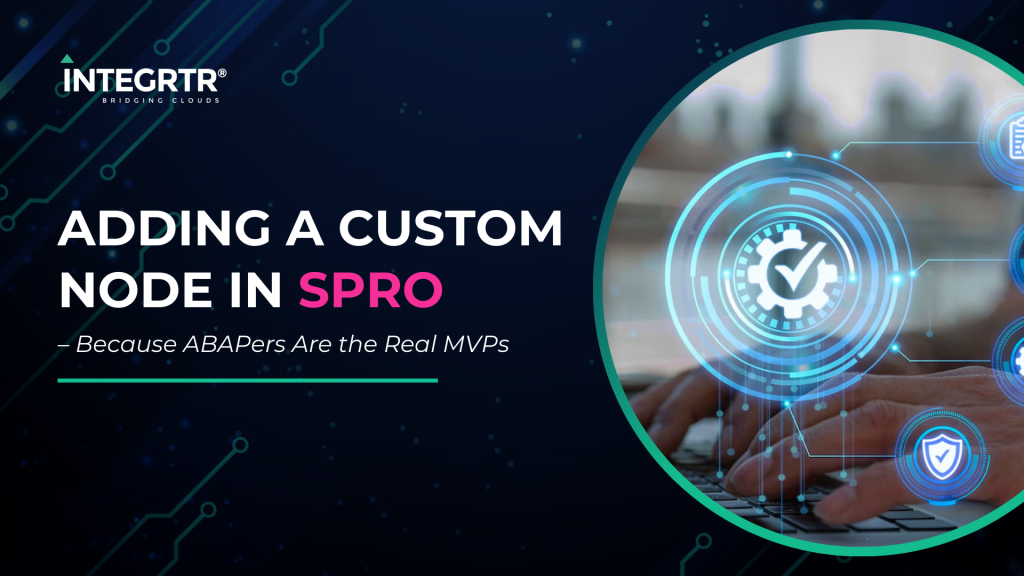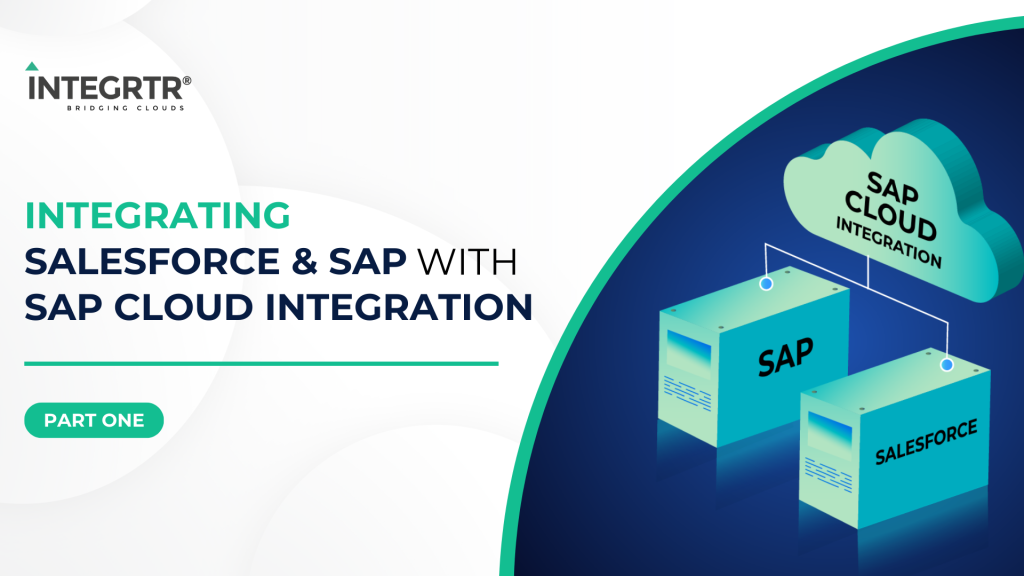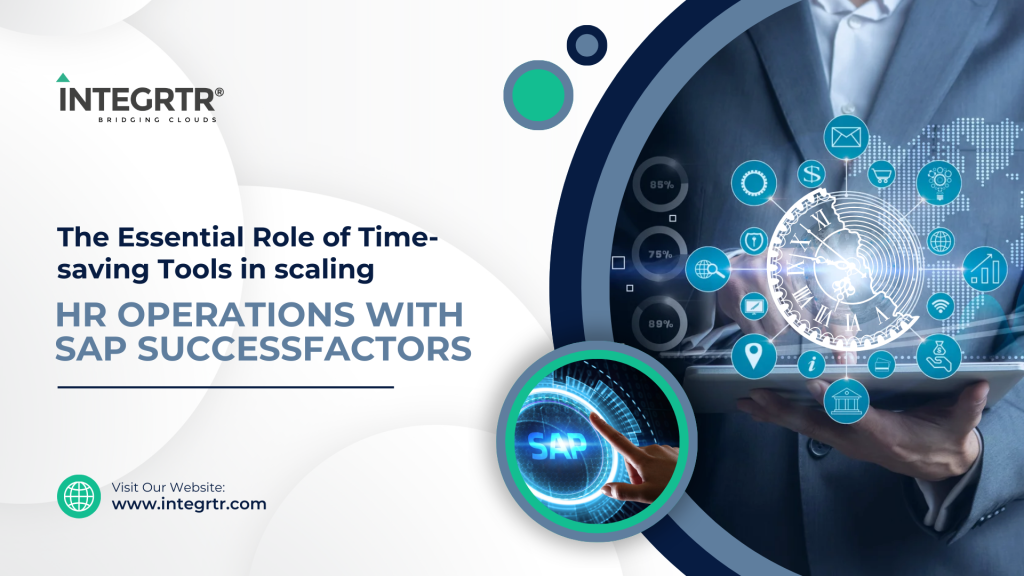In the SAP world, SuccessFactors is an integral cloud-based solution for managing various HR functions. To elaborate just a little more on what is SuccessFactors — casually known as SF or SFSF, SuccessFactors is an HR tool that provides cloud-based software for human capital management (HCM), using the software-as-a-service (SaaS) model.
SAP SuccessFactors defines its data by using a number of preformed data models. Each data model describes how its data elements are structured within a database. In the Metadata Framework (MDF) , objects are used to provide a structured approach to programming. By defining a dataset as a custom object, a developer can easily create multiple similar objects and modify existing objects within a program. These objects also provide “encapsulation,” meaning the data within an object is protected from being modified or destroyed by other functions or methods unless explicitly allowed.
Understanding Metadata framework
The Metadata Framework is used with the modules like Recruiting Management to build the application. So enabling MDF is a prerequisite for such applications. Some of the new applications are typically deployed through Upgrade Center, where it is possible to enable MDF.
MDF provides a set of features that enable you to build end-to-end applications. Using MDF, you can also add objects to the MDF data model or modify the behavior of existing objects to suit your client’s needs.
An object definition contains information about fields (properties of an object), associations (relationship to other objects), workflows, business rules, and security configuration for an object. Using the Configure Object Definitions interface, you can create new objects or customize your applications by modifying existing object definitions to suit your need.
Let’s break down metadata framework to see what it means. Meta is a prefix that is used to mean “an underlying definition or description.” Metadata actually provides basic information about the data, making it easier to locate, use and reuse a particular dataset.
A simple example of an object may be a user account created for a website. If we know details like author, date created, date modified and file size it becomes that much easier for someone to locate a specific document. MDF objects therefore do not depend on the data models, instead they have custom fields. So field criteria are very important attributes of MDF objects that facilitate data consistency and data entry through dependent lists.
What exactly are MDF objects?
The MDF is a UI-based configuration and extension framework that provides creation, modification, maintenance, and deletion of custom objects (called Metadata Objects) within SuccessFactors. They can be used at the corporate level as well as at the people profile level. It is a platform that can be used to build new applications to add to your client’s solution or to modify out-of-the-box applications that have been built using MDF to fit your client’s needs.
The following components constitute the MDF Object :
- Organization: Legal Entity, Business Unit, Division, Department, Cost Center,
- Pay : Pay group, Pay calendar,
- Job: Job function, Job classification
The Metadata Framework is a way to lay out the structure of data in SAP SuccessFactors. We know that an “Object” is a unit of collated fields that describe or belong to another unit in your database system. Just like how an object could be anything, foundation objects could more specifically be business units, departments, or job codes – basically, any kind of data that is used extensively throughout a company. Foundation objects are contained and configured in the Corporate Data Model. This demonstrates the power of the MDF because you can create objects or you can edit existing objects. This ability to create and edit objects lets you store any type of information. It replaces XML-based configuration and the need to import Master Data via CSV/Excel files. MDF allows you to customize customer objects and related application logic as needed to meet your client’s needs. With MDF, you can create and manage database object definitions, object relationships, and object hierarchy. The MDF is tightly integrated with the workflow rules engine, as well as reporting.
How to access Configure Object Definition?
Digging deeper into how we can view these objects, let’s look at the Configure Object Definition. This is the transaction that is used to create, configure and manage the objects and their object definitions.
For this, navigate to Admin Center → Search for Configure Object Definitions on the Action bar.
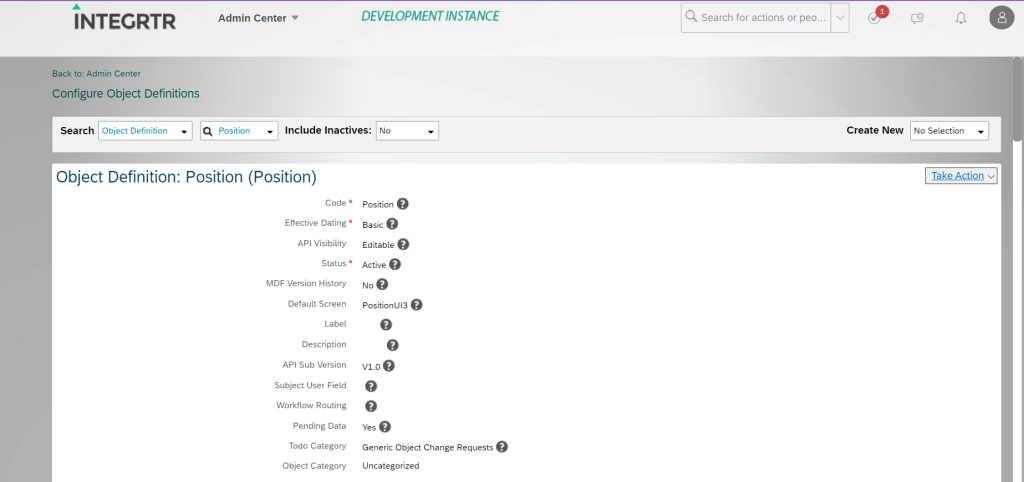
The different fields of the selected object will be displayed and can be edited.
In our example, we select “Object Definition” in the “Search” field and then choose “Position” from the drop-down to view how this object has been defined. As shown in the image above, you can see some basic data about the object in general such as whether it is active or not, whether version history is kept on the MDF definition, etc. Below that begins a list of fields within the object and associated attributes of each field such as its technical identifier, length, the type of field it is, etc. These fields are as shown in the image below.
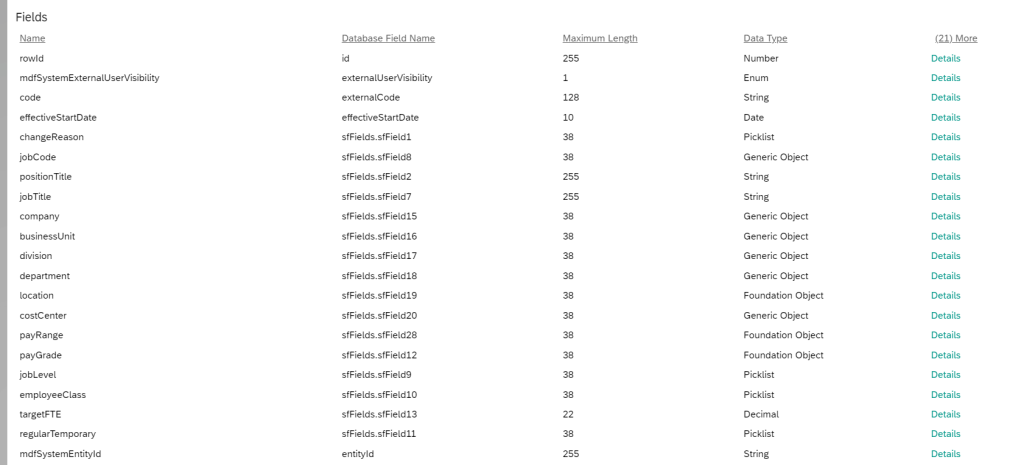
Scrolling further down we can even set rules for what happens when a new object is created (such as pre-populating fields) or validation rules to help with data integrity to check fields before the object is saved. We can edit this definition of the overall object and the fields within the object by clicking “Take Action” and then “Make Correction”.
How to create a new MDF object?
Successfactors offers the chance to configure the objects as per company-specific requirements. These objects are configured using the object definitions during the creation of the object. The structure of each Metadata Object is fixed, although there is a degree of flexibility. You can add up to 200 custom fields for each Metadata Object, in addition to the standard attributes that are required. New objects can also be created with the Create New option as shown on the top right of the screenshot above. From the Create New dropdown, you can select the object definition whose instance you want to create. This opens a form in which you can enter data for that instance. This dropdown will only contain the object definitions that are available to you on a particular Success Factors instance. If you do not see an object definition that you expected to see, check the security permissions. The attributes when creating a new object would look like this:
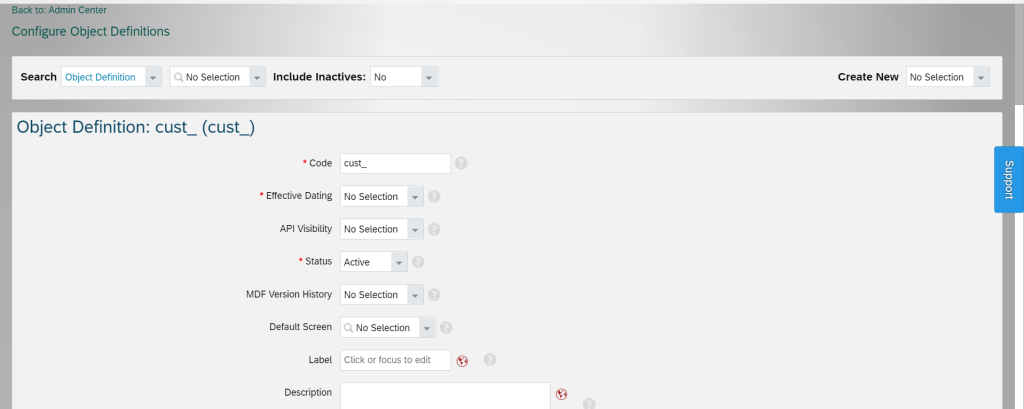
How to use the MDF object?
The MDF is accessible in OneAdmin for system administrators – these are under Company Settings and Employee Files. The Manage Org, Pay and Job transaction in SF used for accessing Foundation Objects that are not yet moved to MDF Objects. One such example is as shown below:

In the Manage Data transaction we can view the objects that have been moved to MDF. This is done by selecting the required object from the dropdowns and we will be able to view the fields of the object. For example let’s have a look at our “Position” object. This transaction will display the object details in the following manner:
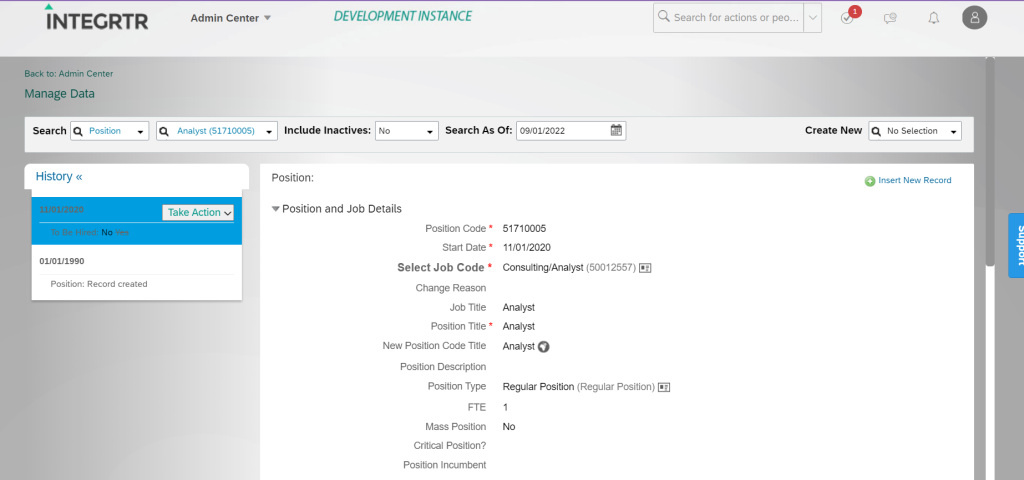
We can choose to edit these fields or also permanently delete them by using the Take Action drop down.
In addition to the standard Metadata Objects there are also other types of Metadata Object, such as Rules, UI components, and Picklists.
In Conclusion..
The SuccessFactors Metadata Framework (MDF) is swiftly becoming a very sought after area of configuration within SuccessFactors. It empowers one to configure custom MDF objects for People Profile, permitting modifications and adaptation of the system to display important data on an employee’s record. Therefore, it is rewarding to see SAP make an addition in this release to allow Analytics to easily take advantage of these objects. In effect, SAP has provided a sturdy and durable extensibility framework that customers can utilize to extend HR cloud functionality and discover company-specific objects to enhance and optimize their own business processes, without the need to code. Access to the custom data will now get very much easier, how it will work out in the future only time will tell. The simple way of using MDF Objects can lead to better decisions, and it can improve quality, eliminate costs, and build trust, besides fostering innovation in products, services and processes.

